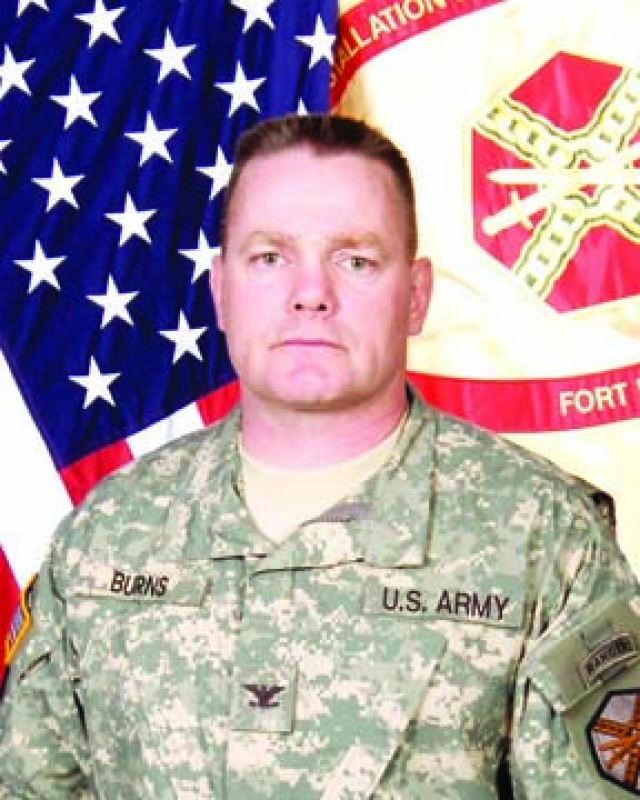FORT POLK, La. --In last week's Guardian, the front page ran a story on improvements to be made at Wheelock Fitness Center. Yet, the question still remains -- how was Fort Polk able to secure the dollars for the project' What was the catch' No pun intended, but was it, as Randy Moss, former New England Patriots' receiver remarked after making a catch, performing an antic and levied a fine by the NFL, "Straight Cash Homey'"
First let me say that I thought it would never happen to me; yet, here I am as an infantry officer assigned to be a garrison commander at Fort Polk, La. I initially thought that the acronym "CLS" meant combat life saver, not common levels of service, or how well we are delivering a service here at The Home of Heroes. I thought that "ISR" was Intelligence Surveillance and Reconnaissance; however, in garrison-speak it translates to Installation Status Report, or how the big Army views us as far as quantity and quality of facilities, infrastructure and services.
The scholastic cartoon about, "I'm just a bill, and I'm sitting here on Capitol Hill" also took on new meaning for me, as I have come to understand requirements and authorizations, authorizations vs. appropriations, and requirements vs. desire-ments (must have vs. nice to have).
On the surface, it appears that all government money is the same, as it is listed in the congressional budget as non-discretionary. That is far from the truth; as the funding stream makes its way from the Department of Defense down to the installations, there many colors of money.
In the Installation Command, or IMCOM, world there are many different colors or pots of money.
Although the rainbow may seem pretty, "crossing the streams" as they say in the film Ghost Busters is actually bad joo-joo. It does not mean "total protonic reversal, or life as you know failing to exist," but it does come close.
In fact, this fiscal year (a fiscal year runs from Oct. 1-Sept. 30), to move money, even within a single color of money requires the installation commander, or IMCOM Commander, Lt. Gen. Rick Lynch, to approve it. So we really need to know the business culture of running an installation.
There is a difference between business culture and a cost culture. A business culture is defined as knowing what requirements you have, and racking and stacking the many claimants within each color of money. This is how we determine the "Priority of Effort", a term with which I am familiar as a Soldier. A business culture on the other hand, is best defined in terms of tasks, conditions and standard -- another set of words I know.
For example, the Directorate of Human Resources is required to deliver a service such as issuing identification cards (task) at Fort Swampy/Polk (condition) within a certain amount of time (standard). The requirement, be it statutory, fiduciary, Army Family Covenant, Army Community Covenant, defines the requirement, and we have to figure out the best means of delivering. Kind of sounds as if we are running a business, doesn't it'
In fact, we are running a business, or in military terms, accomplishing the mission. All the while, we have to balance it with taking care of Soldiers, Families, and civilians.
So, the thought of author F. Scott Fitzgerald, "The mark of true intelligence is the ability to hold two diametrically opposed ideas in the mind at the same time and still retain the ability to function" is prevalent in our overseas contingency missions on the mission side of the Army as well as on the garrison.
How are we able to answer the IMCOM commander's three questions: Are we are doing the right things' Are we doing things right' What are we missing'
A means of answering these three questions and assessing the outcome of our delivery of a service is feedback from the customers.
We receive customer feedback from surveys conducted through the military chain of command and NCO support channels, Army Family Action Plan, at Community Action Councils held 10 times per year, and through our Facebook pages (we have several, one named JRTC and Fort Polk and the other calledAca,!E+Fort Polk Guardian). In fact, we will be hosting a virtual Town Hall Meeting on our FaceBook page on Feb. 23 from 6:30-7:30 p.m. Please join us!
Yet another method of feedback is the Interactive Customer Evaluation or ICE program. All in all, it's a pretty cool program (sorry, I couldn't resist). This indirectly brings me back to the tile of the column, "If I had me $4.3 million dollars."
Well in fact, last year, we received $4.3 million dollars through a program called Flagship. Flagship money is best explained as follows: When a unit deploys, we prioritize what facilities used by that unit need improvement, if the work can be done during a deployment, all the second and third order effects of the work, and then present it to the commanding general who approves/ disapproves/adjusts accordingly.
Last year, we sent the list to Big Army, and they agreed to fund some improvements at Wheelock Gym. We may not have managed everyone's expectations of the move as well as we could have as far as how the sausage was made A,AA,A-- that's kind of what I tried to explain above. In addition, the synchronization of parking lots pavements, flat screens being up on the walls of the gym, the Cantrell Gym equipment arrangements, loss of an indoor track, are that upon which we have to improve.
There is no growth without pain. Indeed there is pain as your roads are improved, buildings are renovated, or changes are made that interrupt that to which we are accustomed. All decisions are weighted out; courses of action presented; cost benefits analyses done; and recommendations made. These decisions are not taken lightly, and we realize that these improvements come at a cost.
From fiscal year 2004 to 2012, the Army has invested $1.2 billion dollars at Fort Polk carrying some cost to our Soldiers, Families and civilians. But it's a worthwhile cost because it delivers on the promises made to this installation and the surrounding communities better and better.
We want to make Fort Polk, the Homes of Heroes, the assignment of choice for Soldiers and families. We hope to hear from you Feb. 24 at the Fort Polk Facebook Town Hall!
Service First!
Support and Defend!
All the Way!




Social Sharing